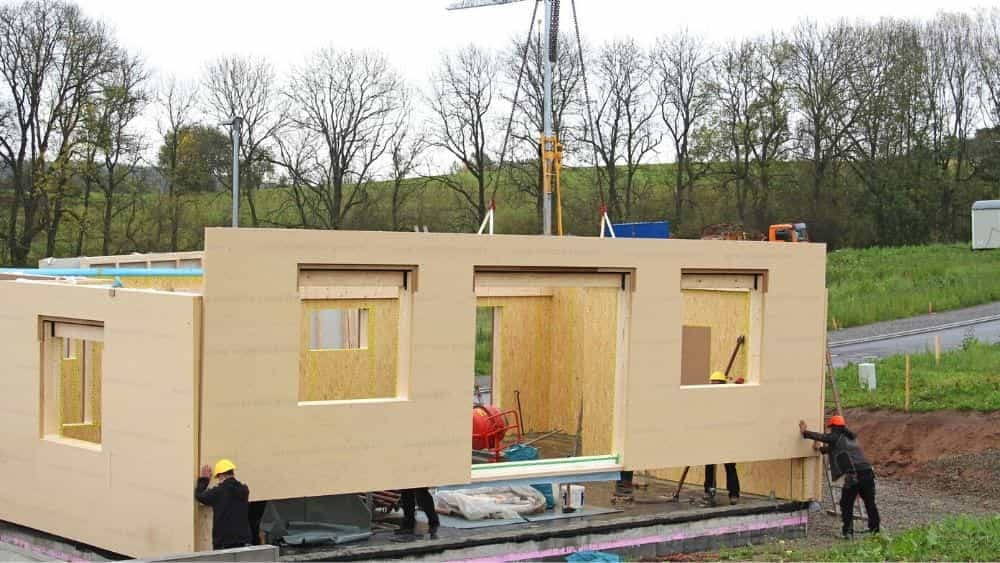In a country where time, money, and electricity always seem to run short — prefab and modular construction just make sense.

In a country where time, money, and electricity always seem to run short — prefab and modular construction just make sense.
We all know how unpredictable building projects can be — weather delays, material shortages, unreliable labour, and rising costs. Over the years, I’ve seen projects stretch out for months longer than planned simply because someone couldn’t get bricks or a crew on-site in time.That’s why prefab and modular construction have caught my attention. They’re not new ideas, but in South Africa, they’re finally starting to get the respect they deserve. Building smarter, faster, and more efficiently doesn’t mean cutting corners — it means using better systems.Prefab and modular methods allow you to build in a controlled environment, while site prep happens at the same time. Less downtime, fewer delays, and predictable quality. It’s what our industry desperately needs.
Here’s the reality — in construction, every week of delay costs money. Whether it’s paying rent elsewhere, financing interest, or keeping workers on standby, time is the biggest expense we often overlook.Prefab and modular methods cut build time by up to 50%, which means you start earning or living in your property sooner.I’ve managed enough projects to know that the longer a build drags, the more things go wrong. Prefab solves that by simplifying coordination and locking in quality upfront.Yes, it might look expensive at first glance — but once you factor in the savings on labour, waste, and time, it’s often cheaper overall.(Internal link: “The Hidden ROI in Sustainable Design”)
The biggest advantage I’ve seen in prefab is consistency.
Every wall panel, frame, or pod is built indoors, away from rain and dust, using precise measurements and proper tools. You don’t have ten different teams building ten different walls on ten different days — you have one standard of quality throughout.That’s something traditional builds struggle to match.
For developers, it means fewer snags. For homeowners, it means fewer surprises when you move in.
In South Africa, we’re starting to see hybrid systems combining traditional and modular techniques — like light steel frames with concrete panels or timber pods for kitchens and bathrooms.It’s not about replacing brick-and-mortar completely. It’s about using each method where it works best.
I’m excited about this space because it’s finally becoming affordable and practical for both developers and homeowners.(Internal link: “Timber, Brick, or Steel?”)
Let’s clear this up — prefab doesn’t mean “cheap” or “temporary.”
The technology has evolved. Modern prefab homes can be luxurious, durable, and energy-efficient.The trick is finding the right partner.
A poor prefab build gives the whole method a bad name, but a good one can outperform traditional houses in both strength and energy performance.I’ve seen modular homes that look no different from high-end custom builds — except they were finished in half the time and cost less to maintain.
South African regulations have finally started to catch up. The NHBRC and SANS 517 standards now recognize light steel and modular construction systems.I’ll admit — I’ve never been a fan of excessive red tape. But having the right approvals means less risk for clients and banks, and that’s a big deal for financing prefab projects.We need more awareness here. If local authorities and insurance providers keep adapting, modular could easily become the standard for low-cost housing and small developments.(Internal link: “ESG in Construction”)
After 15 years in construction, I’ve learned one thing: the faster you can build without losing quality, the more successful your project will be.Prefab and modular give us that edge. They combine the control of a factory with the flexibility of on-site work — and that’s the sweet spot.Whether you’re a developer chasing timelines or a family building a first home, modular isn’t just a buzzword. It’s the future of affordable, efficient, and sustainable construction.
If you’re planning to build, don’t just follow tradition — follow logic.
Prefab and modular methods don’t take away the craftsmanship; they enhance it.As builders, we need to think differently.
And in South Africa, where every day of sunshine counts, building faster and smarter isn’t just good business — it’s survival.
In a country where time, money, and electricity always seem to run short — prefab and modular construction just make sense.
You don’t have to go completely off the grid to beat load-shedding. With smart planning, small upgrades, and a few key systems, you can keep your lights on, your fridge cold, and your sanity intact…
Foundation problems are silent killers in construction. They start small, but fixing them later can cost more than the entire house. Here’s how I’ve learned to spot, prevent, and plan for strong foundations in South…
Most homeowners start renovations with excitement — and end them with regret. After managing dozens of projects, I’ve seen the same mistakes over and over. Here’s how to avoid them and get it right the…